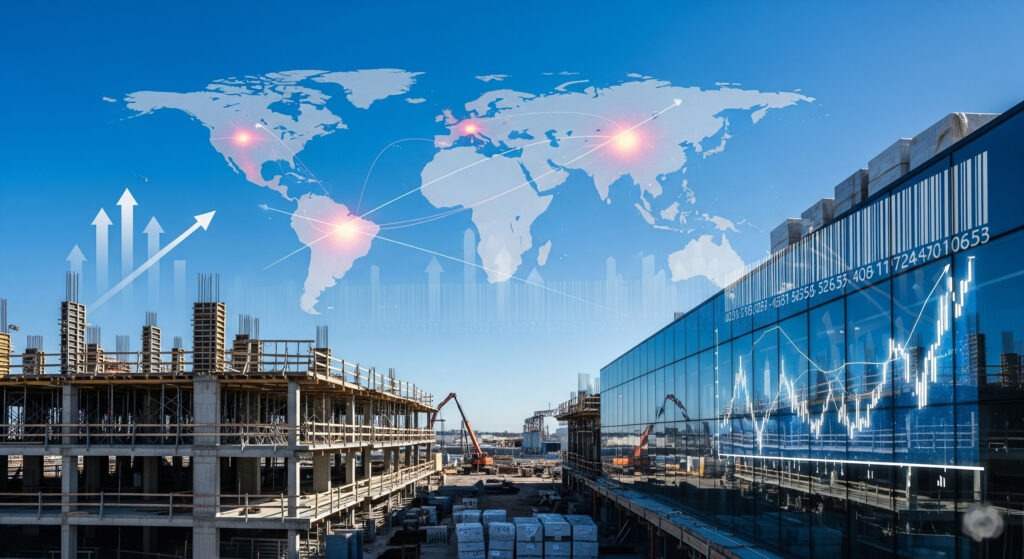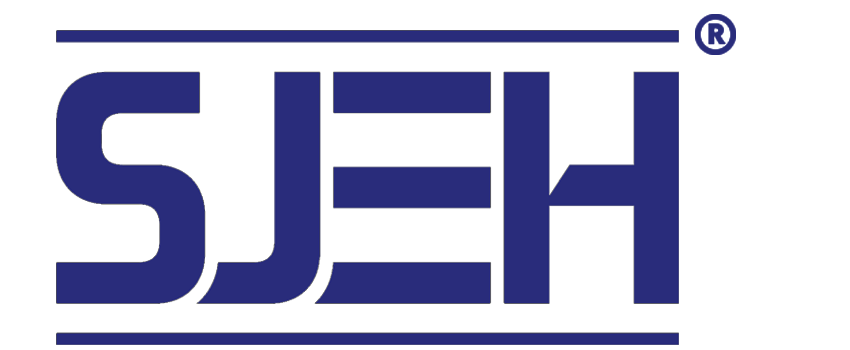The hum of machinery, the smell of fresh concrete, and the sight of rising steel structures – these are familiar scenes in the global construction industry. Yet, beneath this seemingly stable façade, a powerful undercurrent of cost volatility is reshaping how projects are planned, budgeted, and executed, particularly in 2025. This year, the industry is grappling with a complex interplay of forces, notably the unpredictable hand of geopolitics and the disruptive impact of tariffs. Understanding and navigating these turbulent waters has become paramount for every contractor, developer, and investor.

The Elephant in the Room: Geopolitical Shocks and Their Ripple Effect
The world of 2025 is characterized by a heightened sense of geopolitical instability. Ongoing conflicts, shifting alliances, and renewed protectionist sentiments are not just abstract headlines; they have tangible, immediate consequences for the construction supply chain.
- Disrupted Supply Chains: A military conflict in one region can instantly halt the production or transportation of crucial raw materials like steel, copper, or rare earth minerals, which are essential components in everything from structural elements to advanced building systems. Blockades, sanctions, or even heightened security measures can reroute shipping lanes, dramatically increasing logistics costs and delivery times. This unpredictability makes it incredibly difficult for firms to guarantee material availability or fixed prices.
- Energy Price Fluctuations: Geopolitical tensions, especially in energy-rich regions, directly impact global oil and gas prices. Since transportation, manufacturing of materials (like cement and asphalt), and on-site machinery all rely heavily on energy, any spike in these prices quickly translates into higher overall construction costs. The ripple effect is felt from the factory floor to the construction site.
- Currency Volatility: Political instability can cause significant fluctuations in global currency exchange rates. For companies importing materials or equipment, a sudden weakening of their local currency against the currency of the supplier can make purchases drastically more expensive overnight. This currency risk adds another layer of financial uncertainty to international procurement.
- Investment Climate Uncertainty: Geopolitical risks can deter foreign direct investment in certain regions, impacting the flow of capital for large-scale infrastructure projects or new developments. Investors become more cautious, leading to potential project delays or cancellations, and a tightening of available financing.
Consider a large-scale infrastructure project requiring specialized steel components manufactured in a region suddenly affected by political unrest. The project manager, who once relied on a stable supply, now faces a dilemma: scramble for an alternative supplier at a higher price, accept significant delays, or perhaps even re-engineer parts of the project. This is the reality many are facing in 2025.
Also Read: Smart Construction Estimating Services & Insulation Tips for New Zealand Homes
The Tariff Tangle: A Direct Hit to the Bottom Line
While geopolitics often casts a wide net, tariffs deliver a more direct and often immediate punch to construction budgets. Tariffs are essentially taxes imposed on imported goods, typically aimed at protecting domestic industries or influencing trade balances. In 2025, various countries have either maintained existing tariffs or introduced new ones, significantly altering the economics of material procurement.
- Increased Material Costs: The most obvious impact is the direct increase in the price of imported building materials. For example, ongoing tariffs on steel and aluminum from certain countries mean that contractors importing these materials face higher acquisition costs. Similarly, lumber tariffs, particularly those affecting major trade routes, continue to push up prices for wood-framed construction. These cost increases are directly passed down the supply chain, impacting overall project budgets.
- Supply Chain Diversification Challenges: To avoid tariffs, companies might try to diversify their supply chains by sourcing materials from domestic suppliers or countries not subject to tariffs. However, this isn’t always straightforward. Domestic production might not meet demand, leading to higher prices due to increased internal competition, or alternative international suppliers might come with their own set of logistical challenges or quality control issues.
- Reduced Profit Margins: For contractors operating on fixed-price contracts, tariff-induced price hikes can severely erode profit margins. Unless there are robust escalation clauses in contracts, unforeseen tariff changes can turn a profitable project into a loss-making one.
- Project Delays and Uncertainty: The imposition or sudden alteration of tariffs can create immediate uncertainty, causing delays as project teams scramble to re-evaluate material sourcing, update budgets, and renegotiate contracts. This unpredictability makes long-term project planning significantly harder.
- Impact on Specialized Components: It’s not just raw materials. Many specialized components in modern buildings, such as advanced HVAC systems, complex glazing, or high-tech electrical systems, rely on globally sourced parts. Tariffs on these components can have a ripple effect throughout the entire building system.
The re-election of leaders who favor protectionist trade policies has kept tariffs high on the agenda in 2025, particularly impacting sectors like solar energy components and specific types of industrial machinery, forcing contractors to constantly re-evaluate their procurement strategies.
Navigating the Storm: Strategies for Resilience
Facing such formidable headwinds, the construction industry is not standing still. Firms are actively adopting proactive strategies to mitigate cost volatility and build greater resilience.
- Early and Transparent Engagement: Open communication with clients and suppliers from the outset is crucial. Incorporating contingency planning and escalation clauses into contracts allows for shared risk and transparent adjustments if material costs surge. This means moving away from fixed-price assumptions in volatile markets.
- Diversifying Supply Chains and Local Sourcing: Relying on a single source or region for critical materials is a significant risk. Companies are actively working to diversify their supplier networks, exploring options for local sourcing where possible, or identifying alternative countries that are less susceptible to geopolitical tensions or tariffs. This builds supply chain resilience.
- Strategic Material Procurement: Proactive procurement becomes vital. This could involve forward buying materials when prices are favorable, or negotiating long-term supply agreements with price ceilings. Leveraging digital tools for material price forecasting and market intelligence is essential for making informed purchasing decisions.
- Embracing Technology and Data Analytics: Advanced data analytics and AI tools are becoming indispensable. They can analyze market trends, predict potential price spikes, and identify supply chain vulnerabilities. Building Information Modeling (BIM) also plays a role by providing precise material quantities, reducing waste, and facilitating scenario planning for different material options.
- Value Engineering and Alternative Materials: When traditional materials become prohibitively expensive, project teams are increasingly turning to value engineering to find more cost-effective solutions. This might involve exploring alternative building materials with similar performance but lower cost or less exposure to global price fluctuations. For example, substituting a specific type of imported steel with a locally produced engineered timber product.
- Optimizing Logistics and Inventory Management: Streamlining logistics, improving inventory management, and minimizing on-site waste can offset some material cost increases. Just-in-time delivery might need to be re-evaluated in favour of strategic inventory buffers for critical, volatile items.
- Investing in Workforce Development: Labour shortages continue to be a significant cost driver. Investing in training and upskilling the workforce can improve productivity and reduce reliance on expensive, external labour.
- Stronger Collaboration: The volatile environment necessitates greater collaboration between all project stakeholders – clients, designers, contractors, and suppliers. A shared understanding of risks and a willingness to adapt together are key to successful project delivery.
The Long Game: Building for Future Resilience
The challenges of 2025 are not just a passing storm; they represent a fundamental shift in the global economic landscape. The construction industry must evolve to navigate this new normal. This means moving beyond short-term fixes and building inherent resilience into every aspect of operations.
The industry is learning to be more adaptable, using granular data to stress-test projects, and exploring flexible approaches to sourcing and scheduling. While moderate cost increases are widely anticipated globally in 2025 (estimates suggest 2-7% increases in various regions), the true challenge lies in the sheer unpredictability driven by macroeconomic and geopolitical volatility.
Ultimately, successful navigation of this cost volatility hinges on foresight, agility, and a willingness to embrace new strategies. By acknowledging the profound impact of geopolitics and tariffs, and by proactively implementing resilient approaches, the construction industry can continue to build the essential infrastructure and developments that shape our world, even amidst the turbulence of 2025 and beyond.
